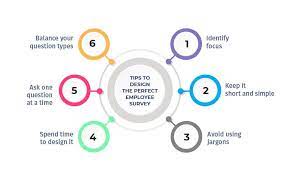In the ever-evolving landscape of the modern workplace, fostering a culture of open communication and feedback is paramount for organizational success. Employee feedback and surveys stand as essential tools for businesses seeking to understand, engage, and optimize their workforce. This exploration delves into the numerous benefits that employee feedback and surveys bring to the table, creating a workplace environment that thrives on collaboration, growth, and employee satisfaction.
Inclusive Decision-Making
Employee feedback fosters inclusive decision-making. When employees feel their opinions are valued, they become more engaged in the decision-making processes, contributing to a sense of ownership and commitment.
Increased Motivation
A feedback-rich environment boosts motivation. Recognition and acknowledgment of achievements, as highlighted in employee surveys, inspire employees to put forth their best efforts, enhancing overall motivation.
Insights for Continuous Improvement
Employee feedback provides insights for continuous improvement. Surveys pinpoint areas that may need attention, allowing organizations to proactively address challenges and refine policies, processes, or training programs.
Cultivating a Learning Culture
Fostering a learning culture becomes possible. Regular feedback encourages employees to view challenges as opportunities for growth. It creates an environment where continuous learning and development are embraced.
Open Communication Channels
Feedback improves communication. It establishes open channels for employees to express their thoughts, concerns, and suggestions. Enhanced communication contributes to a positive work environment.
Boost to Morale and Job Satisfaction
Positive feedback boosts morale. Recognizing and celebrating achievements, as reflected in surveys, enhances job satisfaction. Employees who feel valued are more likely to be content in their roles.
Retention of Top Talent
Feedback aids in talent retention. Understanding employee needs and addressing concerns helps retain top talent. Satisfied employees are less likely to seek opportunities elsewhere.
Attraction of New Talent
Positive feedback attracts new talent. Companies known for valuing and actively seeking employee input become appealing to potential candidates. A positive work culture becomes a key selling point.
Stress Reduction
Feedback contributes to stress reduction. Knowing that their voices are heard and their well-being is considered positively impacts employee stress levels, promoting a healthier work-life balance.
Mental Health Support
Employee surveys can uncover mental health challenges. Addressing these challenges with supportive programs or resources demonstrates a commitment to employee well-being.
Promoting Honest Responses
Use anonymous surveys for honest feedback. Employees may be more candid when they can share their thoughts without fear of repercussions. Anonymous surveys promote transparency and openness.
Ensuring Confidentiality
Emphasize confidentiality in feedback mechanisms. Assure employees that their responses will be kept confidential, fostering trust and encouraging genuine input.
Clear Action Plans
Implement clear action plans based on feedback. Demonstrate a commitment to improvement by addressing specific concerns raised in surveys. Employees value tangible actions taken in response to their input.
Communication of Changes
Communicate changes resulting from feedback. Keeping employees informed about the outcomes of their input reinforces the value of their contributions and demonstrates a responsive organizational culture.
Constructive Responses to Criticism
Respond constructively to negative feedback. Instead of viewing criticism as detrimental, see it as an opportunity for improvement. Addressing negative feedback positively contributes to a culture of growth.
Learning from Negative Trends
Identify and learn from negative trends. Consistent themes in negative feedback may indicate systemic issues that require attention. Using negative feedback as a learning tool contributes to organizational resilience.
Conclusion
Employee feedback and surveys are not mere tools; they are catalysts for building a workplace where collaboration, growth, and employee satisfaction thrive. By embracing open communication, identifying areas for improvement, enhancing employee engagement, and implementing actionable feedback, organizations can create a culture that not only retains top talent but also attracts new talent. The benefits of employee feedback and surveys extend far beyond the numerical data they generate; they contribute to the very fabric of a workplace, shaping it into a space where employees feel heard, valued, and motivated to contribute their best. In a world where employee experience is a critical aspect of organizational success, the integration of effective feedback mechanisms becomes a strategic imperative.

